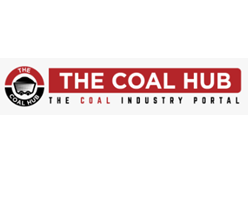World Coal Market: Brief Overview

April 27, 2025 - Last week, European thermal coal indices plunged below 95 USD/t. The pressure was exerted by falling gas prices and rising shipments from the US. Moreover, the transition season also remains a negative factor. German company GKM announced plans to suspend operation at its 255 MW coal-fired power plant from May 20 to July 10.Gas quotations at the TTF hub fell to 398.79 USD/1,000 m3 (-16.83 USD/1,000 m3 w-o-w) amid an increase in European gas storage reserves from 35% to 38%. Withdrawals in April are 22% lower than a year earlier, while injections are 4% higher.
South African High-CV 6,000 sank below 86 USD/t, following the European market, coupled with weakening demand from Indian sponge iron producers, whose needs are being increasingly met by domestic supplies.
Furthermore, consumers are taking a wait-and-see attitude in anticipation of a further downtrend.
The major South African trade union United National Transport Union (UNTU) initiated a ballot to call a strike as an agreement with the Transnet rail operator was not reached. However, the exact date of a possible strike remains unknown, and a decision will not be made until 2 weeks from now. The strike would have an extremely negative impact on South Africa’s ability to export coal.
In China, spot prices for 5,500 NAR coal at the port of Qinhuangdao slipped below 93 USD/t amid high inventories at ports and power plants. Another negative factor is that the completion of maintenance on Daqin railway line is expected to be 5 days ahead of schedule, which will result in the rail freight growth from the current 1.00-1.10 mio t/day to 1.20-1.25 mio t/day.
Also, the main coal producing regions of China reported strong output in March and Q1 2025. Coal extraction in 4 provinces totaled 983 mio t in Jan-Mar 2025 (+10% vs. Jan-Mar 2024), which, together with a 5% reduction in generation over the same period, put significant pressure on prices.
Inventories at the 9 major ports decreased to 31.27 mio t (-1.31 mio t w-o-w), while coal stocks at the 6 largest coastal TPPs totaled 14.17 mio t (+0.39 mio t w-o-w).
Indonesian 5,900 GAR dropped to 81 USD/t, the price of 4,200 GAR continues to sit below 48 USD/t with suppliers reluctant to offer material at current prices. India and China remain oversupplied, although some market participants have seen requests for 5,500 NAR and above.
Australian High-CV 6,000 sagged below 92 USD/t, weighed down by deteriorating demand in premium markets including Japan and South Korea. In March, South Korea cut imports of thermal coal to an 18-year low in response to higher renewable and nuclear generation (cumulative imports fell below 5 mio t, the lowest since mid-2007). This trend is forecasted to continue through July.
China started more aggressive inspections of imported coal, with one shipment of Australian material and two shipments of Russian origin denied entry to China because of exceeding permissible fluoride levels.
Australia’s HCC metallurgical coal index rose above 190 USD/t on supply cuts due to several accidents at Appin (South32) and Moranbah North (Anglo American). Support was also provided by stronger demand from India and the shutdown of one of the Queensland mines for almost 10 days after flooding. In view of supply uncertainties, end-users focused on stockpiling, refusing to resell material.
A benchmark for Low-Vol PCI for January-March 2025 was agreed between Australia’s Foxleigh and Japan’s Nippon Steel at 154.50 USD/t, FOB. South Korea’s POSCO entered into a presumably similar agreement with Foxleigh for this period.

